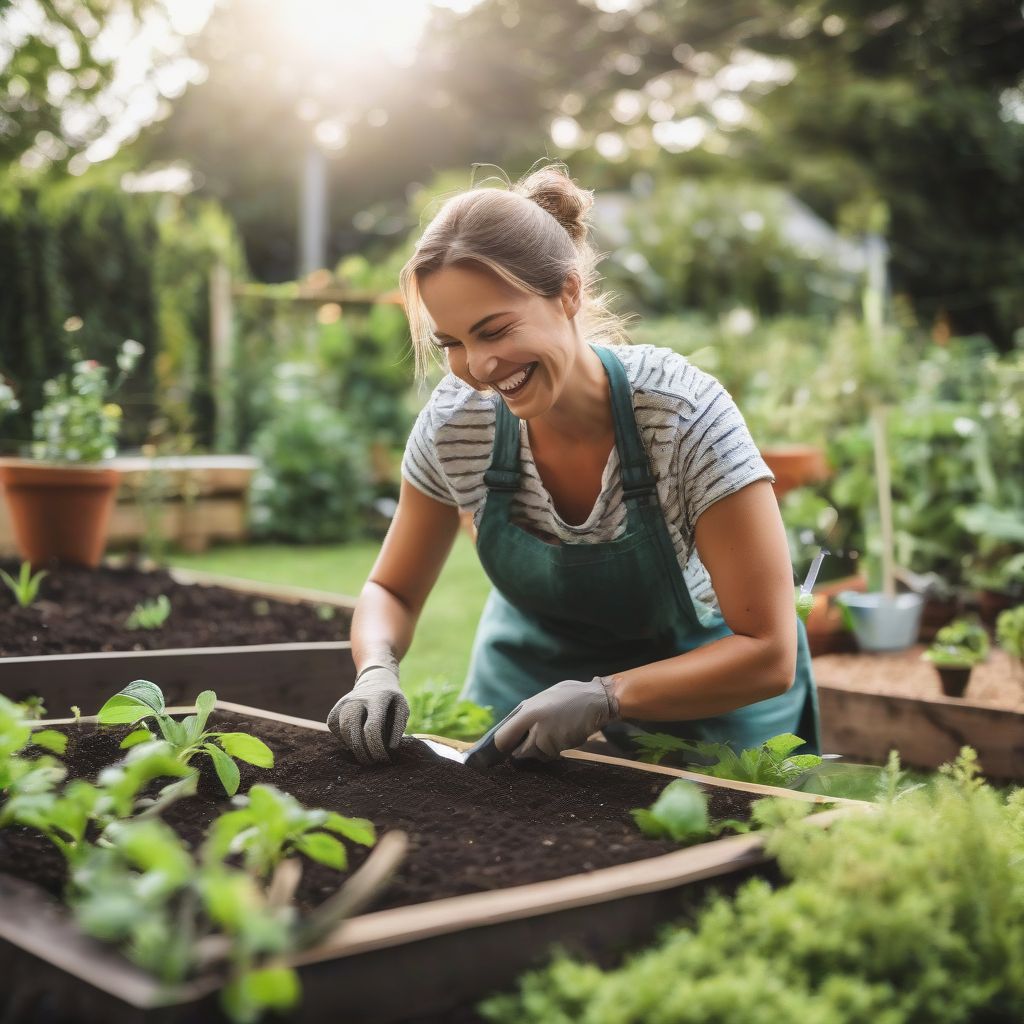Have you ever dreamt of biting into a sun-ripened tomato, still warm from the vine, knowing that you nurtured it from a tiny seed? Starting your own organic garden at home can turn this dream into a delicious reality. It’s easier than you might think to cultivate a thriving garden brimming with fresh, flavorful produce, all while being kind to the environment. This guide will walk you through every step, from planning and preparation to harvesting your first organic bounty.
Planning Your Organic Oasis
Before you grab your trowel, a little planning goes a long way. Consider these key aspects:
Choosing the Right Location
Sunlight is the lifeblood of your garden. Most vegetables need at least 6-8 hours of direct sunlight daily. Observe your yard throughout the day to identify the sunniest spot. Also, consider proximity to a water source for easy watering. “A south-facing location is generally ideal,” advises expert gardener, Sarah Green, author of The Beginner’s Guide to Organic Gardening.
Assessing Your Soil
Healthy soil is the foundation of a thriving organic garden. Conduct a simple soil test to determine its pH level and nutrient content. This information will guide your soil amendment choices, ensuring your plants have the nutrients they need to flourish.
Selecting Your Crops
Start small and choose easy-to-grow vegetables like lettuce, spinach, radishes, and beans. These quick-growing crops offer early success and build your confidence. As you gain experience, you can expand your repertoire to include more challenging plants. Consider your climate and growing season when making your selections.
 Starting an Organic Garden at Home
Starting an Organic Garden at Home
Preparing Your Garden Bed
Building Raised Beds (Optional)
Raised beds offer several advantages, including improved drainage, better soil control, and easier access for weeding and harvesting. They can be built from various materials, such as wood, brick, or even repurposed containers.
Amending Your Soil
Based on your soil test results, amend your soil with organic matter like compost, aged manure, or cover crops. This improves soil structure, drainage, and nutrient content, creating an ideal environment for your plants to thrive. “Adding compost is like giving your plants a vitamin boost,” explains Master Gardener, John Smith, in his book Organic Gardening Secrets.
Starting Seeds Indoors (Optional)
Starting seeds indoors gives your plants a head start, especially for longer-growing varieties. Use seed-starting trays or small pots filled with seed-starting mix. Keep them warm and moist until they germinate and develop several sets of true leaves.
Planting Your Organic Garden
Transplanting Seedlings
Once your seedlings are robust enough and the threat of frost has passed, transplant them into your prepared garden bed. Space them according to the recommendations on the seed packet. Be gentle with the roots to minimize transplant shock.
Direct Sowing
Some crops, like carrots, radishes, and beans, are best sown directly into the garden bed. Follow the seed packet instructions for planting depth and spacing.
Maintaining Your Organic Garden
Watering
Water deeply and regularly, especially during dry spells. Aim to keep the soil consistently moist but not waterlogged. Water early in the morning to minimize evaporation and reduce the risk of fungal diseases.
Weeding
Weeds compete with your plants for resources. Remove them regularly, either by hand or with a hoe. Mulching can help suppress weed growth.
Pest and Disease Control
Implement preventative measures to minimize pest and disease problems. Use companion planting, introduce beneficial insects, and practice crop rotation. If problems arise, use organic pest control methods. “Prevention is always better than cure in organic gardening,” emphasizes renowned horticulturalist, Jane Doe, in her acclaimed book The Organic Gardener’s Handbook.
Fertilizing
Feed your plants with organic fertilizers, such as compost tea, fish emulsion, or seaweed extract, to replenish nutrients throughout the growing season.
 Caring for an Organic Garden
Caring for an Organic Garden
Harvesting Your Organic Bounty
The most rewarding part of organic gardening is harvesting the fruits (and vegetables!) of your labor. Harvest your crops at their peak ripeness for the best flavor and nutritional value. Enjoy your fresh, organic produce in salads, stir-fries, soups, or simply enjoy them as a healthy snack.
Conclusion
Starting your first organic garden at home is a journey of learning, patience, and immense satisfaction. By following these steps and embracing the principles of organic gardening, you can create a thriving garden that provides you with fresh, healthy produce while nourishing the environment. Remember to start small, choose easy-to-grow crops, and enjoy the process. What are you waiting for? Start planning your organic oasis today! Share your gardening experiences and tips in the comments below. We’d love to hear about your journey! For more tips on extending your growing season, check out this helpful article: How to Extend Your Growing Season Naturally.



